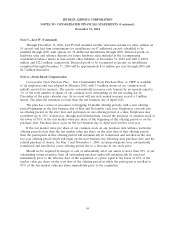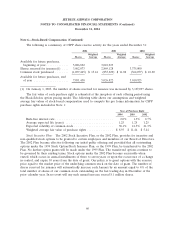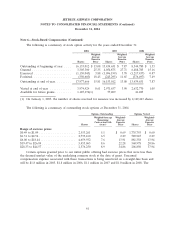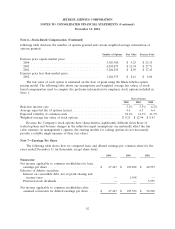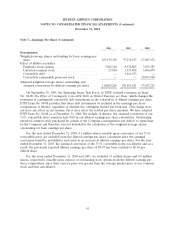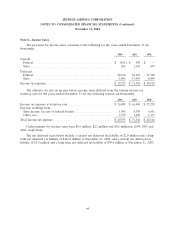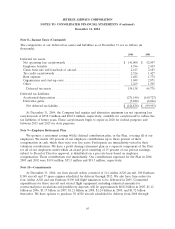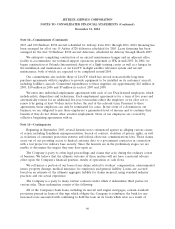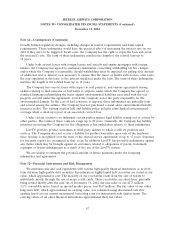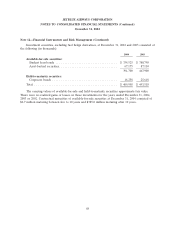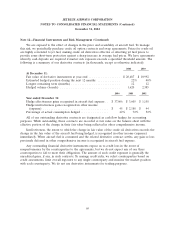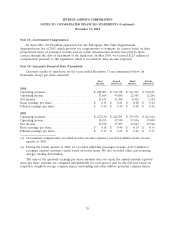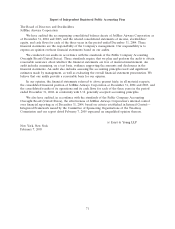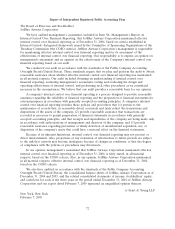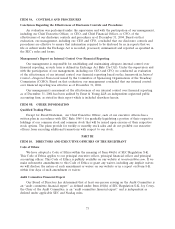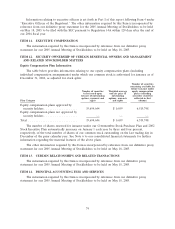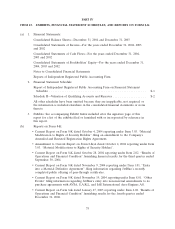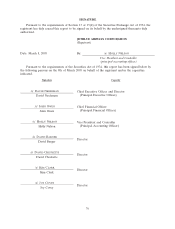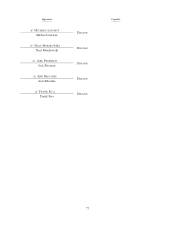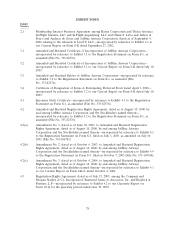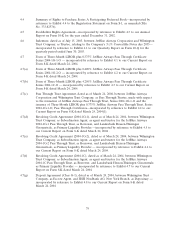JetBlue Airlines 2004 Annual Report Download - page 77
Download and view the complete annual report
Please find page 77 of the 2004 JetBlue Airlines annual report below. You can navigate through the pages in the report by either clicking on the pages listed below, or by using the keyword search tool below to find specific information within the annual report.
JETBLUE AIRWAYS CORPORATION
NOTES TO CONSOLIDATED FINANCIAL STATEMENTS (Continued)
December 31, 2004
Note 12—Financial Instruments and Risk Management (Continued)
We are exposed to the effect of changes in the price and availability of aircraft fuel. To manage
this risk, we periodically purchase crude oil option contracts and swap agreements. Prices for crude oil
are highly correlated to jet fuel, making crude oil derivatives effective at offsetting jet fuel prices to
provide some short-term protection against a sharp increase in average fuel prices. We have agreements
whereby cash deposits are required if market risk exposure exceeds a specified threshold amount. The
following is a summary of our derivative contracts (in thousands, except as otherwise indicated):
2004 2003
At December 31:
Fair value of derivative instruments at year end .................. $ 20,487 $ 10,992
Estimated hedged position during the next 12 months ............. 22% 40%
Longest remaining term (months) ............................ 12 12
Hedged volume (barrels) .................................. 1,620 2,385
2004 2003 2002
Year ended December 31:
Hedge effectiveness gains recognized in aircraft fuel expense . . $ 37,066 $ 3,605 $ 1,158
Hedge ineffectiveness gains recognized in other income
(expense) ..................................... $ 45 $ 2,188 $ 44
Percentage of actual consumption hedged ................ 42% 72% 52%
All of our outstanding derivative contracts are designated as cash flow hedges for accounting
purposes. While outstanding, these contracts are recorded at fair value on the balance sheet with the
effective portion of the change in their fair value being reflected in other comprehensive income.
Ineffectiveness, the extent to which the change in fair value of the crude oil derivatives exceeds the
change in the fair value of the aircraft fuel being hedged, is recognized in other income (expense)
immediately. When aircraft fuel is consumed and the related derivative contract settles, any gain or loss
previously deferred in other comprehensive income is recognized in aircraft fuel expense.
Any outstanding financial derivative instruments expose us to credit loss in the event of
nonperformance by the counterparties to the agreements, but we do not expect any of our three
counterparties to fail to meet their obligations. The amount of such credit exposure is generally the
unrealized gains, if any, in such contracts. To manage credit risks, we select counterparties based on
credit assessments, limit overall exposure to any single counterparty and monitor the market position
with each counterparty. We do not use derivative instruments for trading purposes.
69


